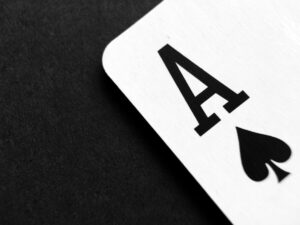Notwithstanding the fact that he was not the first, or only, person to do so, Charles Wells was immortalised in the Victorian music hall song, ‘The Man who Broke the Bank at Monte Carlo’, popularised by Charles Coborn. An inventor, gambler and convicted fraudster, Wells arrived in the Principality of Monaco in July, 1891, with the express intent of winning enough money at Casino de Monte-Carlo to fund an ambitious naval architecture project. Wells was infatuated with a French artists’ model, Jeannette Paris, who was less than half his age, and he aimed to impress her by creating one of the largest luxury yachts in the world.
In any event, Wells embarked on a five-day winning streak, during which he converted his initial £4,000 into £600,000 and ‘broke the bank’ on several occasions. Each card and roulette table at Casino de Monte-Carlo had a reserve of 100,000 Monégasque francs and, if any player won more than that amount they were said to have ‘broken the bank’. In a deliberately melodramatic ceremony, the table in question was covered with black crepe cloth, play was suspended, and extra cash was retrieved from the vault.
Exactly how ‘Monte Carlo’ Wells, as he became known, repeatedly beat the house remains a mystery. Wells insisted that his winning streak was down to an infallible gambling system, based on six years’ study of games of chance. He said, ‘Anyone is free to watch me play and imitate me, but the general defect of the ordinary casino gambler is that he lacks courage.’ However, granted Wells’ criminal tendencies, even after his exploits at Casino de Monte-Carlo, it would be fair to say that his protestations of innocence probably need to be taken with a generous pinch of salt.
 Ausaf Umar ‘Omar’ Siddiqui, also known to casino staff as ‘Mr. S.’, is a former vice president of merchandising and operations at Fry’s Electronics Inc. who, in 2008, was indicted, tried and convicted of one count of wire and one count of money laundering. Siddiqui signed a plea deal, admitting guilt to the two felonies, and defrauding his former employer of $65.6 million, provided the federal government dropped seven other felony charges; he was subsequently sentenced to six years’ imprisonment.
Ausaf Umar ‘Omar’ Siddiqui, also known to casino staff as ‘Mr. S.’, is a former vice president of merchandising and operations at Fry’s Electronics Inc. who, in 2008, was indicted, tried and convicted of one count of wire and one count of money laundering. Siddiqui signed a plea deal, admitting guilt to the two felonies, and defrauding his former employer of $65.6 million, provided the federal government dropped seven other felony charges; he was subsequently sentenced to six years’ imprisonment.
Siddiqui reportedly earned $225,000 a year, but devised a highly profitable ‘kickback’ scheme, wherby he would buy increased quantities of goods, at inflated prices, from some of Fry’s suppliers in return for a percentage of the total sales price. Indeed, he set up an entirely fraudulent company, called ‘PC International’, solely for the purpose of receiving millions of dollars in illicit payments.
Siddiqui used much of his ill-gotten gains to pay off enormous gambling debts in Las Vegas and continue his façade as a high-roller, or ‘whale’. Indeed, in his heyday, he was well-known on the Las Vegas Strip, where casinos vied with each other for his attention. They flew him to Las Vegas from his home in Palo Alto, in the San Francisco Bay Area of California, ‘comped’ him lavish accommodation, including the 7,000-square-foot Chairman Suite at the Venetian, for example, and extended him millions of dollars in credit.
In the space of a decade, Siddiqui gambled away as much as $167 million at the MGM Grand Casino, Las Vegas Sands Casino, Palms Casino Resort and elsewhere but, in 2005, his scheme started to unravel when a Fry’s employee caught sight of confidential documents, including abnormally high commission amounts on his desk. In 2011, Siddiqui filed for Chapter 7 bankruptcy, listing liabilities of over $136 million, mostly in gambling debts, against assets of less than $7 million, of which just $80 remained in his checking account.
